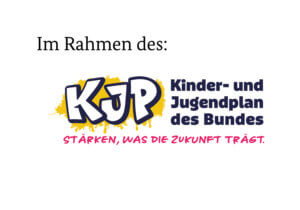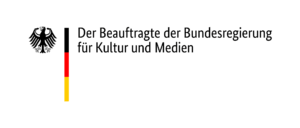About us
The guiding principles for our work
We, meaning the board and management of ASSITEJ Germany, employees of the ASSITEJ projects Wege ins Theater, NEUSTART KULTUR – Junges Publikum, and PERSPEKTIV:WECHSEL, and employees of the Children’s and Youth Theatre Centre in the Federal Republic of Germany (KJTZ), have developed guiding principles for our work. These can be understood both as a foundation and as a compass for our working processes, decisions, and actions – both internally and externally. We derive concrete measures from these principles that aim to create a diverse and inclusive working environment, as well as act as an example for other performing arts practitioners working with and for young audiences.
ASSITEJ members, institutions, and the like are welcome to use the guidelines for their own drafts. Please contact us, so that the work and expertise that went into these guidelines can be appropriately recognised and credited.
ASSITEJ Germany
Who or what is ASSITEJ?
ASSITEJ is an international children’s and youth theatre organisation. The network encompasses over 80 countries from all continents.
ASSITEJ Germany is an interest group for youth theatre, as well as a registered non-profit organisation. The ASSITEJ has around 480 members, including full members, individual members, and other institutions such as universities, associations, and publishers.
ASSITEJ members are organised into six regional working groups, which operate on a self-organised basis . As a non-profit organisation, the ASSITEJ functions as a legal entity. For example, it submits applications, issues donation receipts, and collects membership fees. ASSITEJ is the legal entity of the Children’s and Youth Theatre Centre in the Federal Republic of Germany, and is responsible for the funding programmes Wege ins Theater, FAIR P(L)AY, and PERSPEKTIV:WECHSEL. The ASSITEJ board works on a voluntary basis, and currently consists of eleven people. It also currently employs 28 staff members.
What does the ASSITEJ do?
The ASSITEJ advocates for children’s and young people’s rights, and wants them to be able to participate in art and culture. It operates worldwide and connects people and institutions that create theatre for children, young people, and families. At the same time, spaces are created in which children and young people can make theatre themselves. The ASSITEJ is committed to recognising performing arts for young audiences. This involves money, visibility, funding, as well as cultural, educational, and social support. The basis for this collective work is the ASSITEJ Manifesto.
The ASSITEJ promotes encounters, knowledge, funding and awards, and always has the theatres and performers of the performing arts for young audiences in mind, as well as the cultural and artistic participation of children and young people.
The organisation’s bodies
As a non-profit organisation, the ASSITEJ’s bodies are its board of directors, who regularly meet, and the Annual General Meeting, which takes place one a year.
- The annual general meeting is open for all members. The possible types of membership are: individual membership (Next Generation, supporting membership – one vote each) and full membership (two votes each). Members are able to transfer their votes to other members.
- The board of directors works on a voluntary basis, and currently consists of eleven members – five of whom form the executive board, and six of whom function as committee members.
Contacts / Contact persons
Managing director, ASSITEJ Germany
Anna Eitzeroth (she/her)
[email protected]
+ 49 (0)69 291 538
Membership management and general queries
Paula Sasse (she/her)
[email protected]
The ASSITEJ’s regional working groups
These comprise artists and/or theatres that work in close proximity to one another. There are six regional working groups in Germany: AK Nord (Schleswig Holstein, Mecklenburg-Western Pomerania, Lower Saxony, Bremen, Hamburg); AK Ost (Saxony, Thuringia, Saxony-Anhalt, Berlin, Brandeburg); AK NRW (North Rhine-Westphalia); AK Südwest (Saarland, Rhineland Palatinate, Hesse); AK Baden Württemberg (Baden-Württemberg); and AK Bayern (Bavaria). Members of theses working groups are active in local or regional cultural policy, elect spokespeople for their working groups, and organise and stage festivals, as well as other events when required. The spokespeople function as important points of contact for members, the board, politicians, and the general public. The working groups differ from each other in their structure and organisation.
Working groups (AGs)
Working groups are created within the ASSITEJ on a project-related or ad hoc basis. Each group has one or multiple points of contacts to the main office or the board. The working groups are open to all members and orient their working practices around the respective topic. For example, the AG Politik (political working group) exchanges ideas on strategies, arguments, and approaches to political lobbying; generates responses to specific debates on funding cuts; and swaps materials such as letters to politicians and position papers. The working groups offer opportunities for members to network with one another and to become involved with the work of the association.
Political lobbying
One of the ASSITEJ’s main tasks is political lobbying. This involves communicating to politicians on a municipal, state, and federal level that children and young people have the right to participate in culture and arts, and that theatre for young audiences needs funding. The ASSITEJ operates on a federal level and is working on a network of political decision-makers at this level. This work also involves significantly strengthening the ASSITEJ’s head office, so that youth theatre can be considered for funding at this level.
In the AG Politik, theatre makers from every region can exchange political lobbying strategies with representatives from the regional working groups, the board, and head office. The goals of the working group are to discover which states or municipalities have either exemplary initiatives or are under threat from cuts, as well as to exchange letters and arguments required for lobby work, so that each member doesn’t have to formulate their own every time. Strategies with regard to current political tendencies are also discussed with the working group. If you would like to be added to the AG Politik mailing list, please contact [email protected]
On the 20th April 2023, the ASSITEJ invited members of the German government to an event regarding children’s and youth theatre for the first time.
ASSITEJ International
ASSITEJ International is an international association of theatre for children and young people. It connects theatres, organisations, and individuals from around the world who work in the performing arts for young audiences. It supports the right for children and young people to take part in art and culture, as well as their rights to education and free time, worldwide – regardless of their social or ethnic origins, their sexuality or gender identity, their physical or mental abilities, their religion or their worldviews. ASSITEJ International brings people together in order to foster the exchange of knowledge and methods in the field of performing arts for young audiences, and to help develop these exchanges across borders.
The members of ASSITEJ International include national centres, professional networks, and other organisations.
The German-speaking ASSITEJ centres in Austria, Switzerland, Luxembourg, Liechtenstein and Germany carry out activities together regularly, such as campaigns relating to the World Day of Theatre for Children and Youth Theatre.
Contact (board member)
- Julia Dina Heße [email protected]
Publications
The ASSITEJ publishes various publications, digitally and in print, multiple times a year, on a range of topics and in different formats. The authors are experienced theatre practitioners, scientists, and experts, as well as contributors from other disciplines.
Publications include:
ASSITEJ Prizes
ASSITEJ prizes are awarded every two years as part of the AUGENBLICK MAL! Festival, which is organised by ASSITEJ Germany. A jury composed of representatives from the regional working groups, the KJTZ, and the executive board decide the prize winners. Members are asked to nominate potential winners in three different categories – the ASSITEJ Prize, the ASSITEJ Organiser Prize, and the ASSITEJ Prize for Cultural Journalism (Bernd-Mand Prize).
For the first time in 2023, the ASSITEJ awarded the Vera Gerdau Prize for the Funding of Inclusive Projects in Children’s and Youth Theatre in cooperation with the Vera Gerdau Foundation. A mixed-ability jury decides on the applications submitted for this prize.
Here you can find an overview of previous prize winners.
Committee appointments and memberships
The ASSITEJ is a member of the following associations/organisations
- ASSITEJ International
- Bundesvereinigung Kulturelle Jugendbildung (BKJ)
- Bundesverband freie Darstellende Künste (BFDK)
- Bundesakademie Wolfenbüttel
- Fonds Darstellende Künste
- LKB Hessen
The ASSITEJ is involved in the following committees
- The German Cultural Council’s Council for Performing Arts and Dance
- Working group „Darstellende Künste und Schule in Hessen“ (Performing arts and schools in Hesse)
- Standing conference „Kinder spielen Theater“ (Children perform theatre)
- Executive Committee of ASSITEJ International
KJTZ
Who are we?
The Children’s and Youth Theatre Centre in the Federal Republic of Germany (KJTZ) is a specialist centre working nationwide to develop and fund performing arts for young audiences. Together with its legal entity ASSITEJ e.V. and its projects Wege ins Theater (Pathways into Theatre), FAIR P(L)AY and PERSPEKTIV:WECHSEL (Change:Perspectives), the KJTZ works under the label darstellende künste & junges publikum (performing arts & young audiences). The centre’s work is checked by “critical friends”, who are comprised of the members of the KJTZ Board of Trustees.
What do we do?
The KJTZ curates its own projects and events in which it addresses current topics in the field of performing arts for young audiences, and offers both space and methods for professional discourse. It allows the opportunity to meet people who either work in the performing arts for young audiences, or have a strong interest in them.
The KJTZ provides funding and scholarships, and organises award schemes that recognise and therefore fund artistic practice in the performing arts.
The KJTZ is recognised for its work in making performing arts for young audiences visible, and strengthening this visibility in the cultural sphere.
The KJTZ collection preserves different generations’ experience and knowledge in the performing arts for young audiences. The KJTZ is working on making all of its educational resources accessible, both in its office in Hesse as well as digitally. The collection embodies the spirit of the performing arts for young audiences, and, as a dynamic archive, provides contributions both to academic research and artistic practice.
All KJTZ employees address discrimination and structural barriers, in their work and within individual projects, in order to work in an accessible, inclusive and unprejudiced manner.
What do we want?
The KJTZ sees itself both as a learning institution and as a “critical friend” for the performing arts for young audiences. The KJTZ does not consider itself as able to directly change theatre practice, but it is committed to enabling exchanges, encounters, funding, the transfer of knowledge, and further training for practioners in the performing arts for young audiences. By doing so, the KJTZ tries to provide contributions to theatre practice in order to achieve the following goals:
- That all children and young people should have the equal opportunity to exercise their cultural right to take part in performing arts for young audiences. Within the KJTZ’s work, theatre for young audiences is inseparable from an awareness of discriminatory practices, the criticism of power structures, and practice rooted in solidarity.
- That children and young people will help to develop locations, structures, and programmes for performing arts for young audiences, as well as those within the KJTZ,
- That practitioners of and institutions for performing arts for young audiences will represent the diversity of those audiences, including their backgrounds and experiences, with regard to content as well as both structurally and aesthetically. They will prioritise dismantling barriers and eliminating exclusion as a key task for their practice, though their programmes and their staff.
- That performing arts will be produced for young audiences in the full breadth and diversity of its types, styles, and genres.
- That engaging with young audiences and the performing arts for children and young people will become a standard, even intergral part of performing arts curricula in university and higher education.
Executive Board & Board of Trustees
Here you will find an overview of our honorary committees.
Our staff
Here we are – that is to say, the people who make up the ASSITEJ, the Children’s and Youth Theatre Centre in the Federal Republic of Germany (KJTZ), Pathways into Theatre (Wege ins Theater), and FAIR P(L)AY. Here you can find more information about our teams, as well as the different points of contact.













